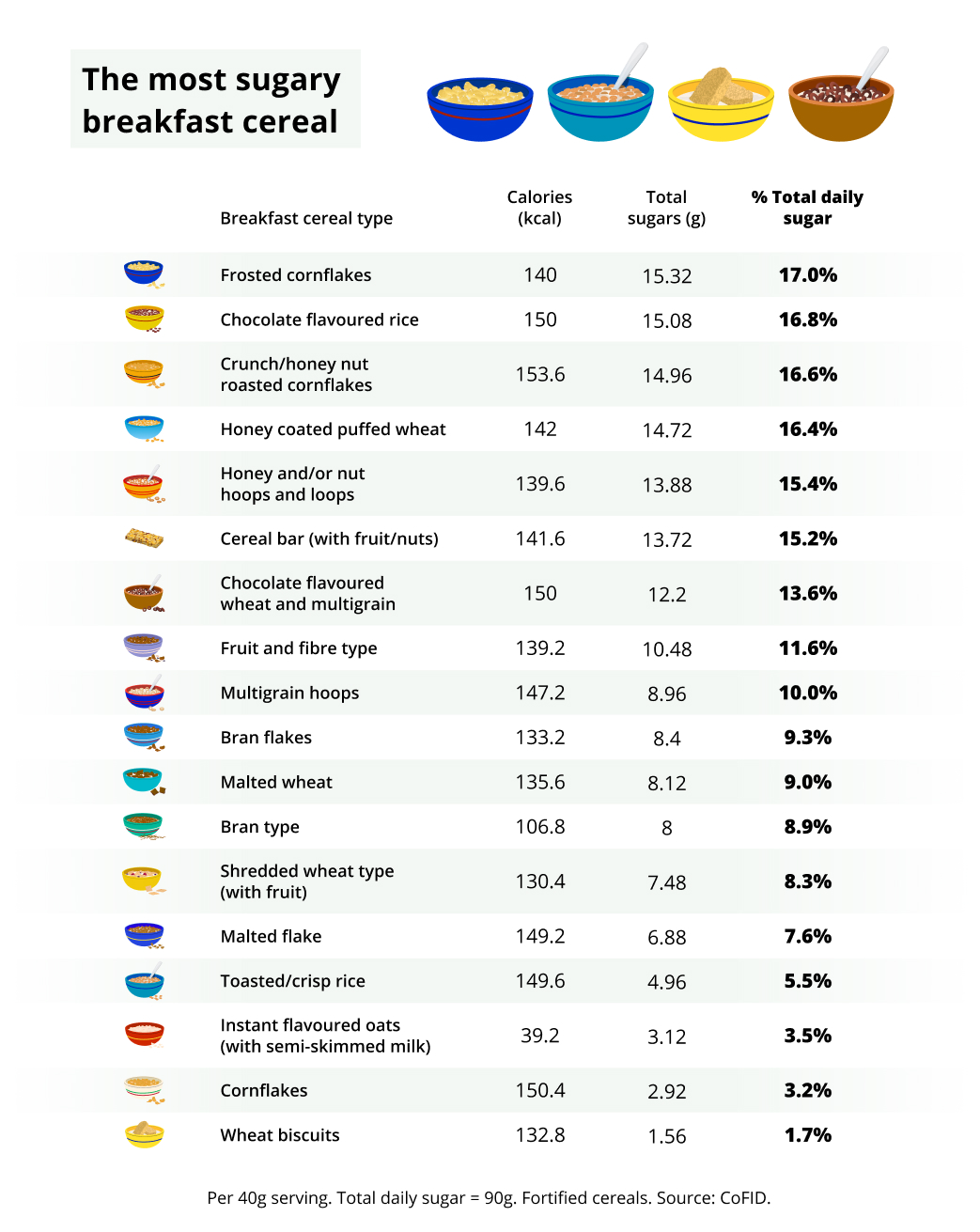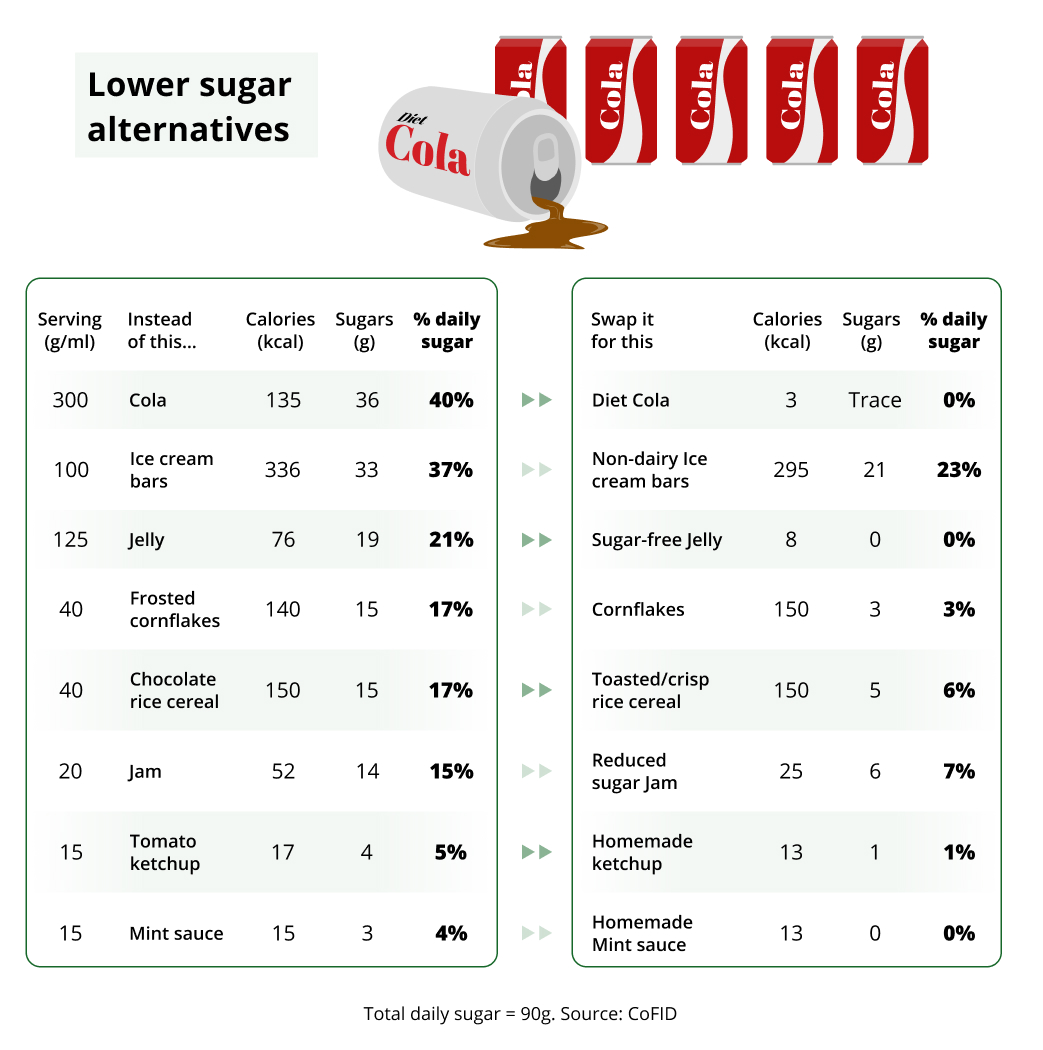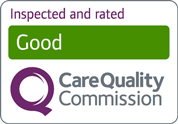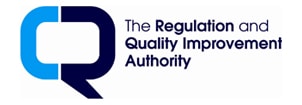The unexpected sugar contents in everyday foods and drinks
Sugar is everywhere - and not just in the obvious treats like sweets and fizzy drinks. From breakfast cereals to pasta sauces, many everyday foods contain hidden sugars that can quickly add up.
To find out more, our expert nutritionist, Vinny Kodamala, breaks down how to read food labels, explains what the traffic light system means, and reveals just how much sugar is in everyday food items. Vinny also shares her expert advice on the best ways to cut down on your sugar intake, whether through smart food switches, or by speaking to your GP about medicated weight loss treatments.
Whether you're cutting back for health reasons or just want to be more informed, we’ve got the tools and tips to guide you.
How much sugar should we be eating?
It’s important that everyone keeps an eye out for the secret sugars that sneak into everyday foods and drinks.
Adults in the UK are advised to consume no more than 90 grams of total sugars per day. This includes 30 grams of ‘free sugars’, which is roughly equivalent to seven sugar cubes. ‘Free sugars’ include those added to food and drinks, as well as sugars naturally present in honey, syrups, and fruit juices. These should make up no more than 5% of your total daily calorie intake.
According to the NHS, products are considered to either be high or low in sugar if they fall above or below the following thresholds:
- High: More than 22.5g of total sugars per 100g
- Low: 5g or less of total sugars per 100g
In the UK, the Food Standards Agency’s traffic light labels make it easier to understand what’s in your food at a glance. These labels show the levels of fat, saturated fat, sugar, and salt per serving, along with how much they contribute to an adult’s daily recommended intake.
Green means the food is low in that nutrient and generally a healthier choice. Amber suggests moderate levels, and red indicates high levels which should be eaten less often or in smaller portions.
Just because most of the label is green doesn’t mean the product is healthy overall. Always check which nutrients are marked red, especially sugar.
Some foods may seem low in sugar based on the label, but the portion size used for the nutritional information might be much smaller than what people typically eat. It’s important to compare the label’s portion size with how much you actually plan to consume.
Understanding food labels is a vital skill for making healthier choices. The traffic light system is a great tool, but only if consumers know how to interpret it correctly. That means looking beyond the front of the pack and checking the full nutritional breakdown and portion sizes.”
To learn more about how we often misjudge our portion sizes, read about our experiment into the average portion size here.
The most sugary types of breakfast cereal
While lots of people know that chocolate, sweets, and desserts are high in sugar and to be enjoyed in moderation, one unexpected area where sugar sneaks into our diets is during breakfast.
Our researchers analysed more than 2,800 different foods and drinks in Public Health England’s Composition of Foods Integrated Dataset (CoFID) to discover which types of breakfast cereals contain the most sugar per 40g serving.

Breakfast foods can often be packed with unexpected amounts of sugar. You might expect sugar contents to be high if you’re treating yourself to pancakes and syrup for breakfast, but even some of the most common cereals you may be eating on a daily basis could contain a shocking amount of sugar.
Honey is another popular option for adding a bit of sweetness to breakfast cereals, and while it is better for you than adding sugar, honey still contains much more sugar than many people may first think. Honey, in fact, contains 58kcal and 15g of sugar per 20g serving.
Our portion size experiment found that the average person overserves themselves porridge oats by 55%, orange juice by 48%, and cereal by 19%, compared to the recommended portion size.
The most sugary sauces
Sauces and condiments may not be foods we think about very often, but, if you’re a fan of adding lots of sauces to your meals, you could be adding more sugar to your diet than you might first expect.

Sauces and condiments are often very high in sugar and fat, and can quickly change a healthy meal into something much more calorific. You might not consider the contents of a sauce to be an issue since you may only be having a small amount on your meals, but if eaten every day, that could be a lot of extra sugar in your diet.
While it’s important to keep an eye on our sugar intake, it’s also important to not rely on sugar contents alone to dictate whether a food is healthier than others.
For example, your average mayonnaise from the shops may contain much less sugar than a barbecue sauce, however mayonnaise is also very high in fat too, meaning that it has many more calories than the average barbecue sauce. It’s essential that you take everything into consideration when choosing healthier foods.
What are the dangers of eating too much sugar?
Many people are unaware of just how much sugar they’re consuming daily. Even foods marketed as ‘healthy’, like granola bars, flavoured yoghurts, or smoothies, can contain surprisingly high levels of added sugars.
Eating too much sugar contributes to you consuming too many calories, leading to weight gain. Being overweight increases your likelihood of developing a number of health problems, such as heart disease or type 2 diabetes, and can even increase your risk of certain cancers.”
Learn more facts and statistics about weight loss and obesity.
Why do we get sugar cravings?
Sugar cravings are natural and shouldn’t be a source of guilt. We need sugar in our diets and our bodies and brains have evolved to seek out sugary and calorific foods.
The problem comes when these urges to indulge in easily available sugary foods begin to impact our healthy eating, resulting in an unbalanced diet.
Food is increasingly being used as a coping mechanism for people who are using the gratification our brains give us from food to deal with their stress, anxiety, or depression.
One way you can think about sugar cravings, or general hunger cravings, to better understand them is to split your hunger into three categories - physical hunger, mental hunger, and emotional hunger.”
- Physical hunger - Physical identifiable signs that your body needs food. E.g., a rumbling stomach, feeling tired or irritable, feeling physically empty.
- Mental hunger - Psychological triggers causing feelings of hunger. E.g., smelling food, seeing food advertised, walking by your favourite restaurant, feeling bored, habit.
- Emotional hunger - Emotional triggers that cause you to desire food. E.g., having a bad day, being in a bad mood, remembering something that makes you feel bad.
How to reduce your sugar intake
The UK government has set targets to reduce sugar consumption, particularly in products aimed at children. Progress does not just depend on manufacturers reformulating products, it also relies on consumers being informed and empowered to make better choices.
Since the introduction of the Soft Drinks Industry Levy in 2016, commonly called the ‘sugar tax’, many manufacturers have reduced or removed added sugars from their products. As a result, a wide range of fizzy drinks and squashes now contain little or no added sugar. When choosing soft drinks, it’s a good idea to look for options labelled ‘no added sugar’ to help reduce your overall intake.
If you’re trying to cut down on food sugars, start by checking labels on everyday staples like breakfast cereals, sauces, and ‘low-fat’ snacks. Just because a product is low in fat does not mean that it can’t be higher in sugar. Opt for products with more greens and ambers on their labels, and be cautious of reds - especially when it comes to sugar.
Lower sugar swaps
It often isn’t realistic to overhaul your whole diet and totally cut out the foods and drinks that you enjoy. One thing you can do is swap some of your favourite sugary items for their low-sugar or sugar-free alternatives.

If you’re struggling to keep on track with your diet, you can find personalised online support through our Nutritional Coaching programme. The programme provides on demand progress tracking, meal feedback, and dedicated advice from our nutritionist team.
Medicated weight loss treatments can also be an option for people who are struggling to cut down their sugar intake as part of a weight loss journey. Treatments can be offered to people struggling with their weight who are above a certain BMI and are at risk of type 2 diabetes. You should consult your GP if you think that this could be a good choice for you.
References
https://www.nhs.uk/live-well/eat-well/food-types/how-does-sugar-in-our-diet-affect-our-health/
https://www.food.gov.uk/safety-hygiene/check-the-label
https://www.gov.uk/government/publications/composition-of-foods-integrated-dataset-cofid
https://www.diabetes.org.uk/living-with-diabetes/eating/food-psychology/emotional-eating-and-feasting





